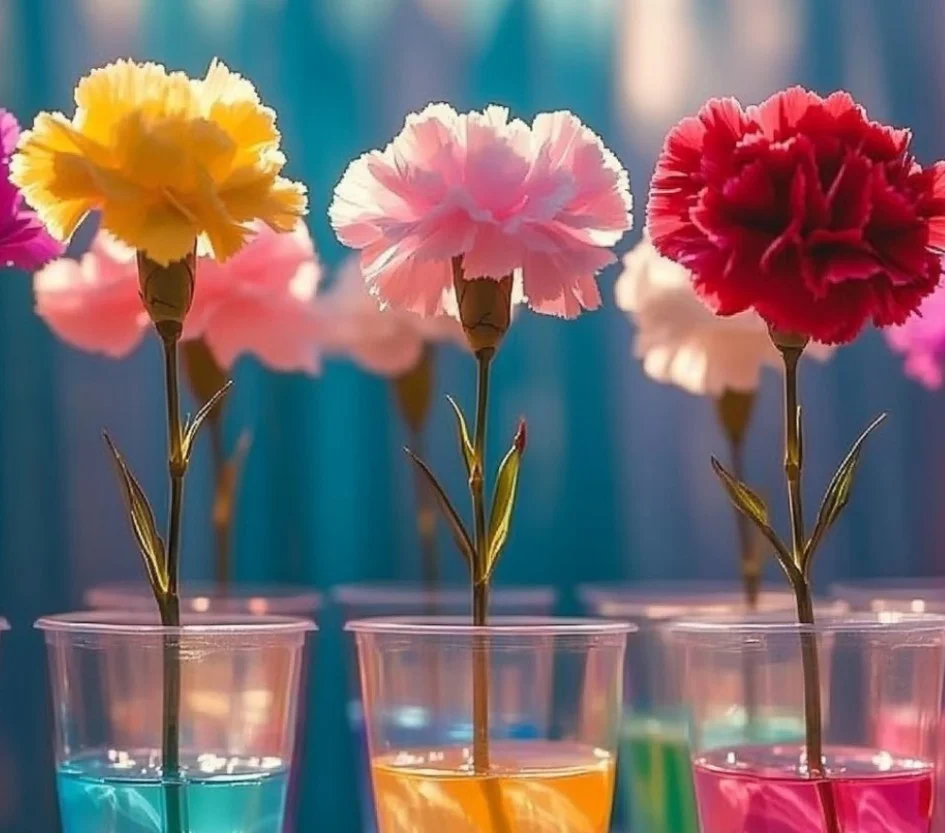Vibrant Color Changing Flower Experiment
As a child, I remember watching my grandmother work her magic in the kitchen, her joyful laughter mixing with the aromas of freshly baked goods and colorful dishes. One of my favorite memories involves a summer afternoon in her garden, where she taught me how to appreciate nature’s beauty—specifically, through the delightful world of flowers. I was always enchanted by her colorful blooms and how they could transform a simple dish. This recipe for Color Changing Flowers is not just a vibrant treat for the eyes; it’s a beautiful reminder of those sunlit days spent bonding with my grandmother over her beloved garden.
With spring in full swing and the garden bursting into life, this experiment captures the essence of the season while adding a splash of creativity to your kitchen. Not only is it fun and educational, but it also charms all ages, making it an ideal project for families looking to inspire their kids’ culinary interests. Let’s dive in!
Why You’ll Love This Color Changing Flowers Experiment
- Kid-Approved: Fun and engaging activity for children.
- Educational Element: Teaches kids about capillary action in plants.
- Customizable: Use various flowers and colors to experiment with.
- Instagram-Worthy: Perfect for sharing your masterpieces on social media!
- Seasonal Delight: Perfect for spring and summer gatherings.
Ingredients
- 4-5 white flowers (like daisies or carnations)
- 4 cups water
- 1 cup food coloring (various colors)
- Containers (vases or jars) for each color
Step-by-Step Instructions
Step 1: Prepare Your Flowers
- Select fresh, white flowers. Make sure they are unsprayed and organic if possible.
- Trim the stems at an angle to increase water absorption.
Step 2: Prepare the Water
- Divide the water into different containers, using enough to cover the stems of the flowers (about 1-2 cups per container).
- Add food coloring to each container (a few drops will do) and stir well. You can create a vibrant rainbow of colors!
Step 3: Place the Flowers
- Place one flower in each colored water container, ensuring the stem is submerged.
- Watch closely as the flower absorbs the water—this should start to happen within an hour!
Step 4: Observe the Changes
- Check back in a few hours or overnight. You’ll notice the petals starting to change color as they absorb the dye!
Tips & Variations
- Experiment with different flower types–some take color better than others!
- Use varying amounts of food coloring to see how it affects the intensity of the flower color.
- For a fun twist, mix colors inside the same container for a marbled effect.
Storage Instructions
This experiment is best enjoyed fresh. If you need to store the flowers, simply keep them in water in a cool place for up to a day. After the color-changing blooms have been displayed, you can safely compost them.
Nutritional Information
- Prep Time: 10 minutes
- Total Time: 2-24 hours (waiting time)
- Servings: N/A for edible measure, as this is an exploration activity!
Frequently Asked Questions
-
Can I eat the colored flowers?
- Typically, the new colors are non-toxic but it’s always best to confirm that the variety of flowers is edible before consuming.
-
What type of flowers work best for this experiment?
- White carnations, daisies, and chrysanthemums generally work great due to their water uptake and color absorption capabilities.
-
Can I use natural dye instead of food coloring?
- Absolutely! Experimenting with natural plant dyes (like beet juice or turmeric) is a fantastic idea for a healthier approach!
-
How often should I change the water?
- Change the colored water if it becomes cloudy or if the flowers look droopy to ensure they stay vibrant and healthy.
Serving Suggestions or Pairings
- Pair these colorful flowers as a centerpiece for your spring table.
- Use them to decorate cupcakes or other desserts for a whimsical touch.
- Enjoy with lemonade or herbal tea for a refreshing twist!
Final Thoughts
The Color Changing Flowers Experiment is a marvelous way to connect with nature and inspire creativity in the kitchen. I hope this delightful journey brings both joy and learning to you and your family, just like it did for me and my grandmother. I would love to hear your thoughts—share your colorful creations in the comments below or let me know how you made this experiment your own! Happy cooking!

